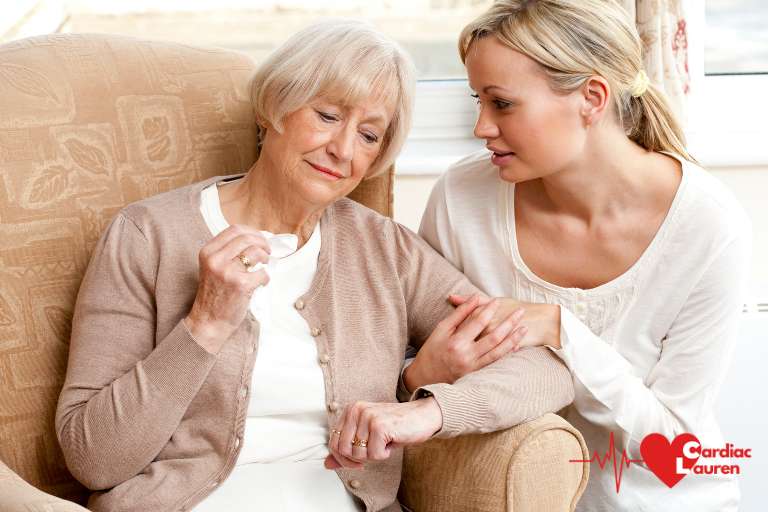What is Phase 2 (aka Phase II)?
Phase 2 cardiac rehab occurs after Phase 1, outside of the hospital setting. It is when patients who have suffered a heart event are discharged from the hospital, return to the care of their GP (General Practitioner) and are thereby classified as ‘outpatients’. However, people who have had surgery, CABG and valve repair or replacements in particular, will have the district or cardiac specialist nurse attend their homes or have appointments with them, so that any lacerations resulting from surgery can be looked after.
If you had stents fitted then you will have been given verbal and written information about the early days of your recovery when at home.

For most Phase 2 patients, discharge summary notes from the hospital will have been forwarded to the local NHS cardiac rehabilitation team and they will make contact by phone. At this initial contact, the patient will be able to ask questions and get advice about taking pain relief, what joint mobilisation and muscle stretches to do, and how to cope with things like coughing or sneezing after having a sternotomy (surgical procedure).
The Heart Manual
The Heart Manual is a handy document given by some NHS trusts as a week-by-week guide to recovery from a heart event, chest pain or surgery. It can be followed in the early stages of cardiac rehab as it starts to educate the person about what has happened, why it happened and what the ongoing support is going to be.
For both ‘new’ cardiac patients and those whose existing condition has changed, Phase 2 is all about understanding the condition and adapting to an adjusted way of life.
Feeling anxious and unsure
Many people feel vulnerable and anxious during Phase 1, as they may not be sure what they can and cannot do. This is completely normal, and support and guidance will be provided by the hospital and cardiac nurses to answer any questions or concerns you have.
It is also important to note that everyone responds to surgery and new medication in different ways and the body will heal and adapt at different speeds. The cardiac nurses will be checking on how wounds are healing and if patients require any extra support at this stage.
Phase 2 Cardiac Rehab – Family Support
Family members are also invaluable during Phase 2, as a support system whose contact with the Phase 2 cardiac rehabilitation team is also important. As there can be a lot of information to understand and remember in Phase 2, family members can help you feel less overwhelmed by reminding you and encouraging you what to do and what to avoid in these early stages.
An example of this is when people who have had a sternotomy (their breastbone opened up), are told not to lift anything heavier than a kettle for the first 5 days. As the days progress they need to be encouraged to move their arms more but not to the extreme where they over-stretch. As each day progresses, they will be able to lift heavier items as long as they ‘keep it in the tube’ and do not hold or reach for anything at arm’s length.

How Long Does Phase 2 Last?
Phase 2 lasts for two to six weeks depending on the heart event or diagnosis. Everyone at this stage will be encouraged to keep moving around the home and start a gradual walking programme. The aim is to achieve 30 minutes of continuous walking daily by the end of the six weeks. For some people, this is easily achievable, whereas others will need longer and their goal may be to just do 10 minutes of activity each day. The cardiac rehab team sees everyone as an individual and will tailor their recovery to each person.
Can I return to work during Phase 2 Cardiac Rehab?
Many people decide that during Phase 2 they are not ready to return to work and most will be unable to drive for some or all of this period of time.
When the time comes, it is important to discuss your return to work with your doctor or healthcare team. They can help you determine when it is safe to return to work and what restrictions or accommodations may be necessary.
I Have Been Diagnosed With A Heart Condition But Did Not Attend Hospital, Am I In Phase 2?
For some people, Phase 2 is the start of their cardiac rehabilitation journey (as opposed to starting at Phase 1 in the hospital). This happens when a person may have attended their NHS health check or seen their nurse or GP and they have run some tests which show they are at risk of having a heart event in the next 5-10 years. Most of these checks would have involved having your blood pressure taken, cholesterol levels checked, height, weight and waist measurements taken, plus a look at other risk factors such as diabetes, diet, activity levels, smoking, stress & anxiety, family history and general lifestyle.
Not all NHS cardiac rehabilitation programmes accept risk patients onto their programmes but will help guide you to where you can have the support for the lifestyle changes you need. For safe exercise guidance, work your way through the Phase 3 videos that Cardiac Lauren has made available – view them here.

